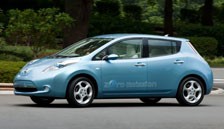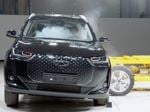Glass’s is predicting that hybrid cars, which combine an internal combustion engine with an electric motor, will represent the dominant ‘alternative fuel’ powertrain technology until 2019, after which they will be overtaken by electric vehicle sales.
Glass’s forecasts UK registrations in 2020 will be just under 2.4 million units. Alternative fuel powertrain technology vehicles will make up 21% of these registrations, with 11% (274,000 units) being electric vehicles (EVs), and 10% (235,000 units) being hybrids.
As part of its report, entitled ‘Alternative Powertrain Vehicles in Europe’ to be published this month, Glass’s predicts that the combined 21% market share for EVs and hybrids in the UK in 2020 will be lower than in Germany (26% of total new car sales) but the same as in France and Italy.
Of the five biggest markets in Europe for car sales, Spain is expected to see the lowest adoption of ‘green’ car technologies by 2020, with a combined market share of 20% for EVs and hybrids.
A key issue for many vehicle manufacturers, who face increasingly tough targets for reduction in their overall CO2 emissions, is the proportion of electric vehicles that make up their overall sales mix.
Andy Carroll, managing director at Glass’s, said: "One of the central issues for the vehicle manufacturers is encouraging consumer adoption of electric and hybrid vehicles, including plug-in hybrids.”
Glass’s recognise the industry is still evolving the best way to deal with predicting the residual value impact of the cost of batteries, the risk of substitution with improved technologies and the end of life disposal / secondary use options.
Carroll said: “Assessing the residual value of an electric vehicle largely depends on its relative total cost of ownership compared with alternatively powered vehicles and the newer models entering the market when it is first sold as a used vehicle – the methodology is, in principle, no different to assessing any other vehicle today.
“To drive adoption, vehicle manufacturers will need to develop strategies to remove most of the residual value risk of the battery from the consumer.”
Glass’s has recommend a number of alternative strategies that could be adopted by the vehicle manufacturers to achieve this, depending on whether the vehicle is being purchased by a consumer or leased:
- Long warranties – Long warranty periods (8 years +) are key. Create a standard for battery quality measurement linked to minimum charge levels (80% certified capacity or replacement).
- Battery Buy Back – Schemes allowing early adopters to swap the battery units to newer technology at a reduced cost.
- Manufacturers leasing the battery – The manufacturer effectively underwriting some of the residual value risk on the battery, though this raises ‘shared ownership’ issues that need to be resolved by the industry.
Carroll said: “The basic framework for dealing with these issues remains pretty much the same, but how the industry responds to the battery residual value issue will be key to consumer confidence and the adoption rate of electric vehicles.”













Login to comment
Comments
No comments have been made yet.